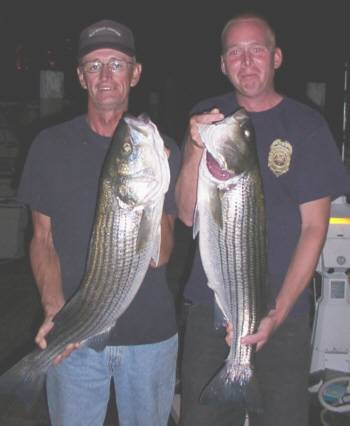|
The Striped Bass is the largest member of the sea bass family. Striped Bass can live up to 40 years and can reach weights greater than 100 pounds. The Striped Bass is anadromous and may ascend streams and travel as much as 100 miles inland to spawn. The native range of the Striped Bass is along the Atlantic coast east of the Appalachian Mountains from New Brunswick south to Florida.
Striped Bass eat a variety of foods, including fish such as alewives, flounder, sea herring, menhaden, silver hake, smelt, sea robins, porgies, and eels. They will also feed on lobsters, crabs, soft clams, small mussels, sea worms, and squid. They have a voracious appetite and will eat almost anything that moves.
Striped Bass will feed with the rise and fall of the tides. Stripers are particularly active with tidal and current flows and in the wash of breaking waves along the shore. As the surf pounds the shoreline small fish, crabs, and clams become easy prey as they are tossed about in turbulence of the breaking surf.
Methods of catching Striped Bass include trolling with parachute jigs, trolling large plugs, using imitation plastic eels, fishing with live eels or live herring. Using bunker whole or cut in chunks. Umbrella rigs can also be an effective method to entice stripers and bluefish. Striped bass are often caught by other anglers who are fishing for Fluke and Porgies. They are always on the look out for a easy meal.
|







